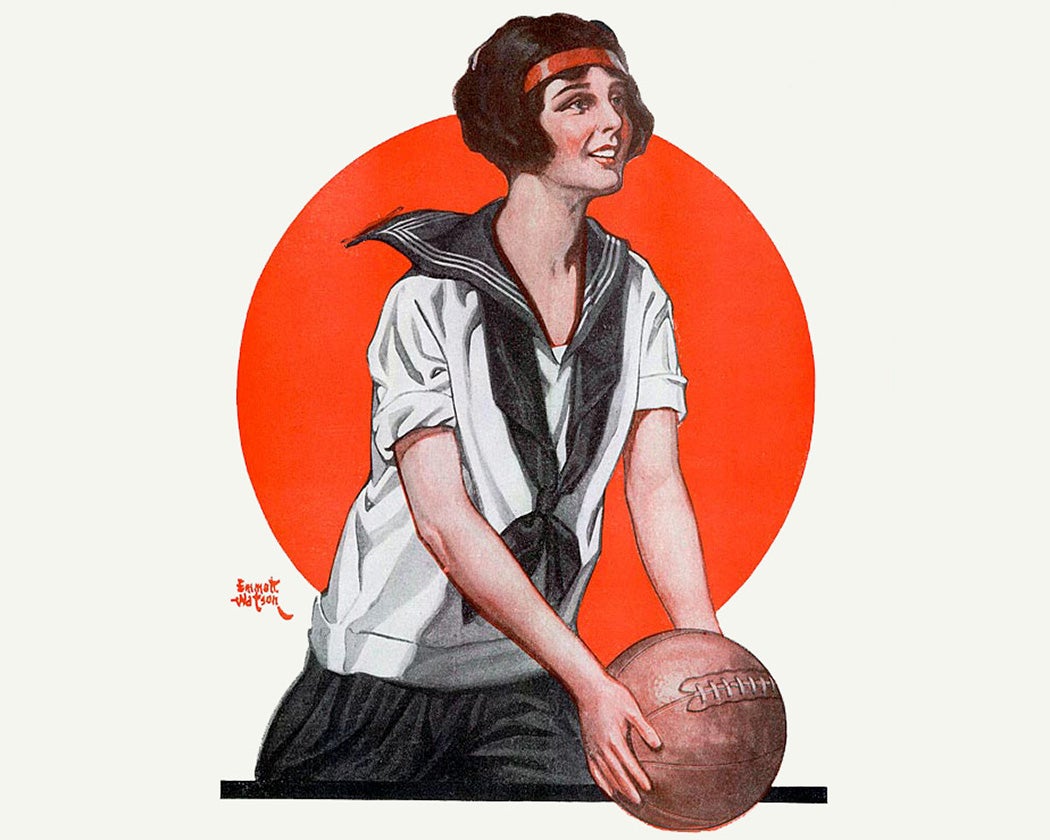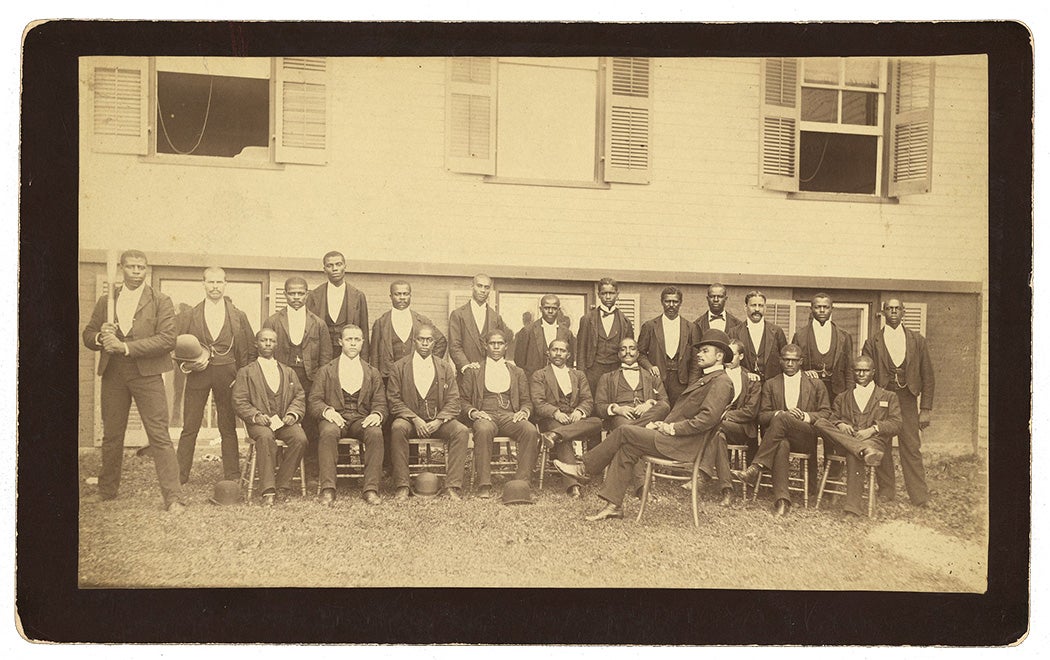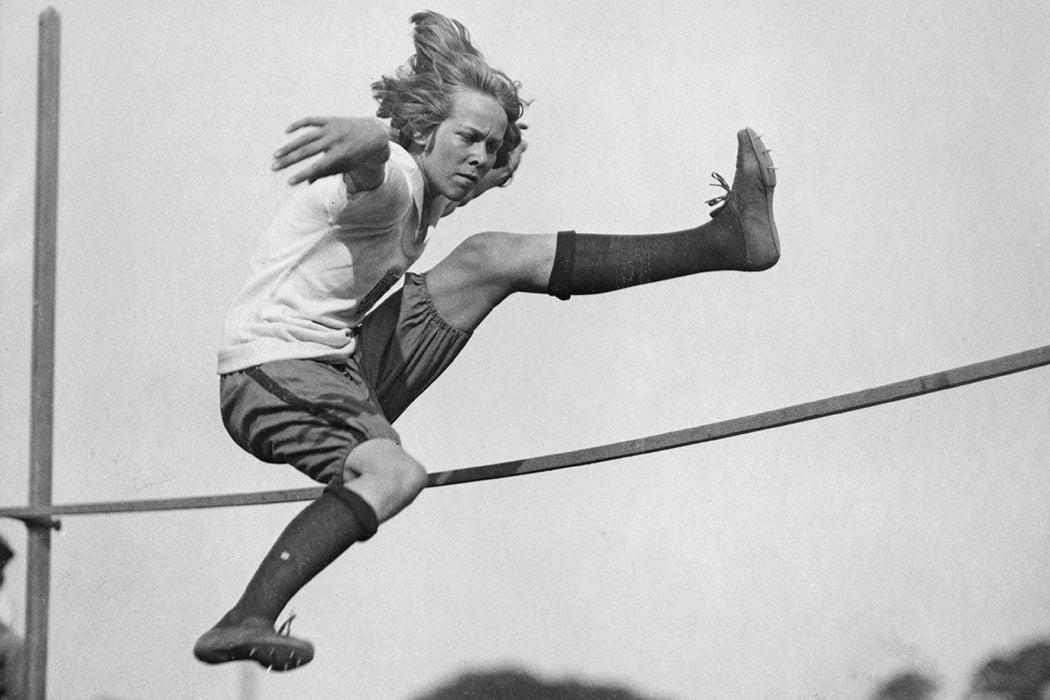The academic study of sport in America traces its roots back more than one hundred years but has seen a tremendous growth in its production and impact only in the last half-century or so. That said, since its inception the field has been characterized by a persistent quest for legitimacy in the broader fields of history, sociology, kinesiology, and more. Therefore, many of the most influential works of scholarship focusing on sport in America discuss a lack of respect and analyze the place of the study of sport in larger academic disciplines.
The articles selected for this reading list trend more historical than the totality of the field of American sport studies. Nonetheless, they demonstrate the chronological, topical, and methodological diversity of sport studies, covering the colonial era to the present and examining the role of race, class, gender, sexuality, regionalism, nationalism, technology, colonialism, immigration, and more in American sport. These articles on sport are stepping stones to understanding the roots, development, broader implications, and meanings of some of America’s favorite pastimes.
Colonial Era
T. H. Breen, “Horses and Gentlemen: The Cultural Significance of Gambling among the Gentry of Virginia,” The William and Mary Quarterly 34, no. 2 (April 1977): 239–257.
Drawing inspiration from anthropologist Clifford Geertz’s study of cockfighting in Bali, Breen, whose other scholarship examines the colonial era in American history beyond the realm of sport, examines the social meaning of gambling amongst elite slave owners in this article. Breen explains the centrality of gambling and horse racing amongst this elite class of white tobacco plantation owners and how they used both to mark status in a world where financial success and failure were often shaped by environmental and other influences beyond their control. He argues that the elite’s gambling reflects important social values of the era including individualism, competition, honor, and materialism.
Kevin Dawson, “Enslaved Swimmers and Divers in the Atlantic World,” The Journal of American History 92, no. 4 (March 2006): 1327–1355.
Contrasting contemporary stereotypes about the capacities of Black people and white people to swim, Kevin Dawson explains how across the Atlantic during the colonial era, enslaved Black people were more likely to know how to and be comfortable with swimming than white people. Amongst Black people, swimming was often a necessity whereas amongst middle- and upper-class white people, swimming was seen as dangerous based on prevailing understandings of medicine and health and as morally inappropriate. For enslaved people, swimming was also sometimes a recreation and a path to additional privileges or even escape from bondage.
Nancy L. Struna, “Gender and Sporting Practice in Early America, 1750–1810,” Journal of Sport History 18, no. 1 (Spring 1991): 10–30.
As part of a special issue of the Journal of Sport History on sport and gender, Nancy Struna examines the role of gender in the expansion of sport that occurred in the Late Colonial, Revolutionary, and Early Republic eras of American history. She finds that while men were the primary producers and consumers of sport in those times, women were involved in sport in multiple capacities as well, playing a role in its shape and definition.

Nineteenth Century
Linda J. Borish, “Farm Females, Fitness, and the Ideology of Physical Health in Antebellum New England,” Agricultural History 64, no. 3 (Summer 1990): 17–30.
In this article, Linda Borish examines the prevailing beliefs about the health of rural women in New England prior to the Civil War. As she explains, despite these activities requiring similar muscles and similar effort, many rural health advocates argued that rural women’s daily activities to contribute to the family economy—things like cooking, washing, milking cows, and the like—were detrimental to their health while their recreational physical activities—things like equestrianism and hiking—were beneficial. In contrast, many urban residents and particularly urban health reformers saw rural women as the epitome of female health and vitality.
Frederic L. Paxson, “The Rise of Sport,” The Mississippi Valley Historical Review 4, no. 2 (September 1917): 143–168.
Although his conclusions have come under well-deserved scrutiny in the century since their publication, Frederic L. Paxson’s article, “The Rise of Sport,” marks the first academic attention paid to the history of American sport. Arguing that sport marked a “new frontier” after the closing of the frontier in the American West, Paxson credits sport with spurring Progressive reforms, temperance, women’s rights, and an overall interest in equal rights.
John Rickards Betts, “The Technological Revolution and the Rise of Sport, 1850–1900,” The Mississippi Valley Historical Review 40, no. 2 (September 1953): 231–256.
In another early example of sport history in a leading academic journal, pioneering sport historian John Betts demonstrated the powerful impact of the Industrial Revolution on American sporting practices. While acknowledging that other factors also contributed to the tremendous growth of sport in the latter half of the nineteenth century, Betts argued that technological change and its accompanying urbanization were the primary driving factors.
Elliott J. Gorn, “‘Gouge and Bite, Pull Hair and Scratch’: The Social Significance of Fighting in the Southern Backcountry,” The American Historical Review 90, no. 1 (February 1985): 18–43.
To understand the lives of the “common people” of the American South in the late eighteenth and early nineteenth centuries, Elliott Gorn examines their fighting practices, which by contemporary standards were brutally violent. Despite bans on fighting, it remained a common practice across the region as a method of settling disputes, often resulting from challenges over honor. Moreover, these arranged battles frequently attracted spectators. As Gorn explains, these violent recreations mirrored the combatants’ violent daily lives in which they faced poverty, exploitation of their labor, and often dire struggles for survival.
Sergio Lussana, “To See Who Was Best on the Plantation: Enslaved Fighting Contests and Masculinity in the Antebellum Plantation South,” The Journal of Southern History 76, no. 4 (November 2010): 901–922.
In examining wrestling and boxing, Sergio Lussana shows how enslaved men were forced or enticed to fight by enslavers, largely for the benefit and enjoyment of white people, but that enslaved people were sometimes permitted to watch the contests, and many derived some pleasure from the spectacle. For the combatants, Lussana shows that the contests were a way to demonstrate masculinity and power in the midst of an institution designed to repress both of those things. Moreover, fighting was also a way for enslaved men to form community and to resist the power of their enslavers.
Twentieth Century
Sarah K. Fields, “Representations of Sport in the Indian School Journal, 1906–1913,” Journal of Sport History 35, no. 2 (Summer 2008): 241–259.
As part of a special issue of the Journal of Sport History on Indigenous sport, Sarah K. Fields examines how students and editors at the Chilocco Indian School—one of many Native American boarding schools across the United States that aimed to “educate” Indigenous children by forcing them to adopt western ways and abandon traditional ones—described the school’s intercollegiate sports programs. Fields notes the surprising attention to girls’ sports, given prevailing ideas about women’s athletic participation in the era, and argues that that these descriptions were focused on issues of sportsmanship, amateurism, and group pride.

Adrian Burgos, Jr., “Playing Ball in a Black and White ‘Field of Dreams’: Afro-Caribbean Ballplayers in the Negro Leagues, 1910–1950,” The Journal of Negro History 82, no. 1 (Winter 1997): 67–104.
This article is one the first to focus on the experiences of native Spanish-speakers in American sports. Adrian Burgos, Jr. examines how Latino baseball players fit into and pushed the boundaries of the Black-white color line. This research laid the groundwork for his later impactful monographs on the topic. Burgos argues that Latino baseball players complicated and challenged the color line when they appeared as players in both the Negro Leagues and the Major Leagues in the years before Jackie Robinson debuted with the Brooklyn Dodgers in 1947.
Gary Ross Mormino, “The Playing Fields of St. Louis: Italian Immigrants and Sports, 1925–1941,” Journal of Sport History 9, no. 2 (Summer 1982): 5–19.
In just one example of the many, many pieces of scholarship about the role of sport in white ethnic immigrant communities in the United States, Gary Ross Mormino argues that in St. Louis, sport helped assimilate first- and second-generation Italian immigrant children to American culture but also kept them tied to their Italian roots. Additionally, he argues that local athletic organizations helped to shape Italian immigrants’ neighborhoods and identities.
Rita Liberti, “‘We Were Ladies, We Just Played Basketball Like Boys’: African American Womanhood and Competitive Basketball at Bennett College, 1928–1942,” Journal of Sport History 26, no. 3 (Fall 1999): 567–584.
Rita Liberti examines how different historically Black colleges and universities thought about women’s sports, particularly basketball, in the Depression Era. Liberti pays particular attention to the role of socioeconomic class in her analysis of why Bennet College focused resources and attention on its women’s basketball team before eventually pulling those same resources and attention despite the overwhelming success of its team.
Susan K. Cahn, “From the ‘Muscle Moll’ to the ‘Butch’ Ballplayer: Mannishness, Lesbianism, and Homophobia in U.S. Women’s Sport,” Feminist Studies 19, no. 2 (Summer 1993): 343–368.
Susan Cahn traces prevailing attitudes towards female athletes in the first half of the twentieth century in this article, which in a different form appears as a chapter in her seminal book on gender and sport in American history. While Cahn’s monograph covers women’s sports across the long twentieth century, including assessing the powerful impact of Title IX, here she examines widespread fears that women athletes were somehow less than women, a sentiment that was often suggested through homophobia. She also shows how, despite this repression, sport served as something of a safe (or at least a safer) space for queer women in the era before the Gay Liberation Movement.
Samuel O. Regalado, “Sport and Community in California’s Japanese American ‘Yamato Colony,’ 1930–1945,” Journal of Sport History 19, no. 2 (Summer 1992): 130–143.
In one of the first examples of the still-developing field of Asian American sport studies, historian Samuel Regalado examines the importance of Japanese American sport before and amidst the unjust internment of Japanese American citizens during World War II. Regalado, who has published several articles and a monograph on the role of sport in Asian American communities, argues in this piece that “through sport [Japanese Americans …] nurtured cultural camaraderie, competitiveness, and pride.”
David K. Wiggins, “‘The Future of College Athletics is at Stake’: Black Athletes and Racial Turmoil on Three Predominantly White University Campuses, 1968–1972,” Journal of Sport History 15, no. 3 (Winter 1988): 304–333.
As part of a special issue of the Journal of Sport History on “The Black Athlete in American Sport,” David K. Wiggins examines protests over racism and unequal treatment by Black athletes at majority white institutions. As Wiggins’ title indicates, these protests frightened many white university administrators, came with consequences—some athletes had their scholarships revoked, some coaches and administrators lost their jobs—and largely stemmed from discrimination against Black players by white coaches and administrators as well as failures to hire Black coaches. The impact of Harry Edwards’ foundational text, The Revolt of the Black Athlete, is evident in Wiggins’s article.
Methodological
Jeffrey T. Sammons, “‘Race’ and Sport: A Critical, Historical Examination,” Journal of Sport History 21, no. 3 (Fall 1994): 203–278.
Jeffrey Sammons’s mammoth and path-defining article explicitly aims to put Black people at the center of Black history in order to better understand all of American history. He begins by defining race, then moves into an analysis of African American sport history scholarship heavily focused on the Journal of Sport History in the twenty years following its first issue in 1973, before suggesting directions for future research that involve more interaction between sport scholars and non-sport scholars.
Susan K. Cahn, “Sports Talk: Oral History and Its Uses, Problems, and Possibilities for Sport History,” The Journal of American History 81, No. 2 (September 1994): 594–609.
In this article—part of what was then an annual section on oral history in the Journal of American History—Susan K. Cahn traces the growth as well as the potential benefits and problems of using oral history interviews as a source to write sport history. Cahn argues that among some of the first academic sport historians, oral history wasn’t widely used, but beginning in the mid-1980s, it became an increasingly popular method for analyzing issues of identity and experience—especially in sports played by what Cahn describes as “disempowered groups” whose games were not often covered by mass media—in post-World War II American sport.
Scott N. Brooks and Dexter Blackman, “Introduction: African Americans and the History if Sport—New Perspectives,” The Journal of African American History 96, no. 4 (Fall 2011): 441–447.
This article serves as the introduction to a special issue of the Journal of African American History titled “African Americans and the History of Sport” and in it Scott N. Brooks and Dexter Blackman offer a concise historiography of the study of the Black athletic activity in America, updating Sammons’s work from nearly two decades earlier. From Edwin B. Henderson’s 1939 The Negro in Sports to Arthur Ashe’s 1991 three-part The Hard Road to Glory and beyond, Brooks and Dexter provide context and background for the excellent articles that make up the rest of this special issue.
Weekly Newsletter
Ben Carrington, “The Critical Sociology of Race and Sport: The First Fifty Years,” Annual Review of Sociology 39 (2013): 379–398.
Noted sociologist of sport and race Ben Carrington examines the development of sport sociology in the half-century following the publication of C. L. R. James’s Beyond a Boundary in 1963. In tracing scholarship on the sociology of sport, Carrington notes that the subfield is sidelined in the larger field of sociology and argues that the best future contributions to sport sociology are likely to come from scholars in sport studies programs.
Amy Bass, “State of the Field: Sports History and the ‘Cultural Turn’,” The Journal of American History 101, no. 1 (June 2014): 148–172.
In the only state-of-the-field of sport history to appear in the Journal of American History, Amy Bass points to a number of reasons why sport history does not occupy a bigger place in the larger study of American history. Bass’s reasons include a bias against sport history in the broader field of American history, the unique and complicated place of sport in American society, and sport historians’ occasional failure to connect their scholarship beyond the boundaries of sport history. Bass’s state of the field is accompanied by commentaries from a handful of esteemed sport historians.
Support JSTOR Daily! Join our new membership program on Patreon today.







